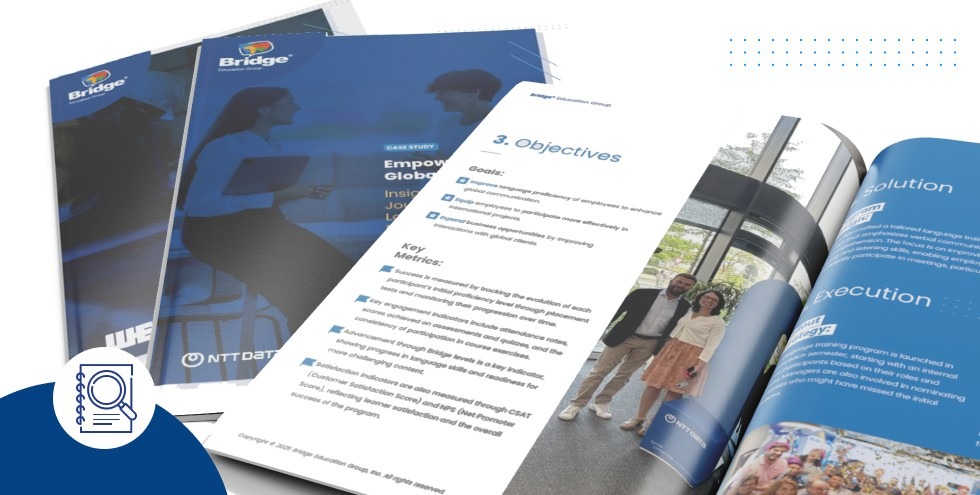In a world where companies operate with globally distributed and multicultural teams, intercultural communication has become a key factor for business success. A recent McKinsey report shows that companies with greater diversity in their executive teams are 9% more likely to outperform their peers in terms of profitability. For HR and training leaders, ensuring that employees can interact effectively across cultural differences is fundamental for productivity, team cohesion, and organizational development.
What are the main challenges of intercultural communication in global teams?
International teams face various communication obstacles due to:
-
Differences in communication styles: Some employees may be more direct, while others prefer more subtle and diplomatic communication.
-
Language barriers: Although English is often the corporate language, not all participants have the same level of fluency. Language training for global professionals can help minimize this gap.
-
Interpretation of non-verbal language: Gestures, expressions, and eye contact can have different meanings depending on the culture.
-
Differences in work norms and expectations: From how meetings are handled to the level of formality expected in written communication.
Example of intercultural misunderstanding
Imagine a team composed of employees from the U.S. and Japan. During a virtual meeting, the U.S. team expects to receive direct feedback on a proposal, while their Japanese colleagues, out of respect and hierarchy, prefer to express their concerns indirectly or in private conversations. This can lead to confusion and delays in decision-making if there is no mutual understanding of communication styles.

Strategies to improve intercultural communication
To overcome these challenges, HR teams can implement effective strategies that foster clear and effective communication:
Implement language training programs with an intercultural focus:
-
Offer language training for multinational companies with an intercultural communication component.
-
Facilitate classes with live teachers who guide the understanding of different communication styles.
Promote cultural awareness in the organization:
-
Organize workshops and seminars on cultural diversity and global communication.
-
Create spaces where employees share their cultural experiences.
Encourage the use of a common language in business communication:
-
Establish clear guidelines on the use of corporate language in meetings, emails, and internal documents.
-
Provide translation tools and internal glossaries to minimize misunderstandings.
Develop communication guides for multicultural teams:
-
Create documents with best practices for intercultural communication.
-
Include tips on inclusive language and clarity in written and verbal communication.
Foster a culture of feedback and continuous improvement:
-
Implement surveys and meetings to assess the effectiveness of intercultural communication.
-
Provide ongoing training and adapt strategies based on team needs.
Success stories: How companies have improved intercultural communication through language training
Global companies that invest in language training and intercultural communication programs experience tangible improvements in their productivity, cohesion, and operational efficiency. Here are two examples of companies that have successfully implemented these strategies with Bridge support:
NTT Data Chile implemented a language training program with an intercultural focus to improve collaboration between its international teams. Thanks to classes with live teachers and effective communication modules, the company managed to reduce misunderstandings, increase cohesion, and improve operational efficiency.
Weir Chile, with a presence on multiple continents, faced communication challenges between diverse teams. Through Bridge, its employees strengthened their language skills and cultural understanding, resulting in clearer communication, greater inclusion, and better results in global projects.
These companies are examples of how a well-designed language training strategy can transform the work dynamics in multicultural environments, optimizing productivity and global collaboration.

Intercultural communication as an engine of success
Improving intercultural communication in global teams not only strengthens collaboration but also drives productivity and inclusion in the organization. Investing in language training and effective communication strategies allows HR leaders to ensure that teams can work cohesively, regardless of their cultural differences.

